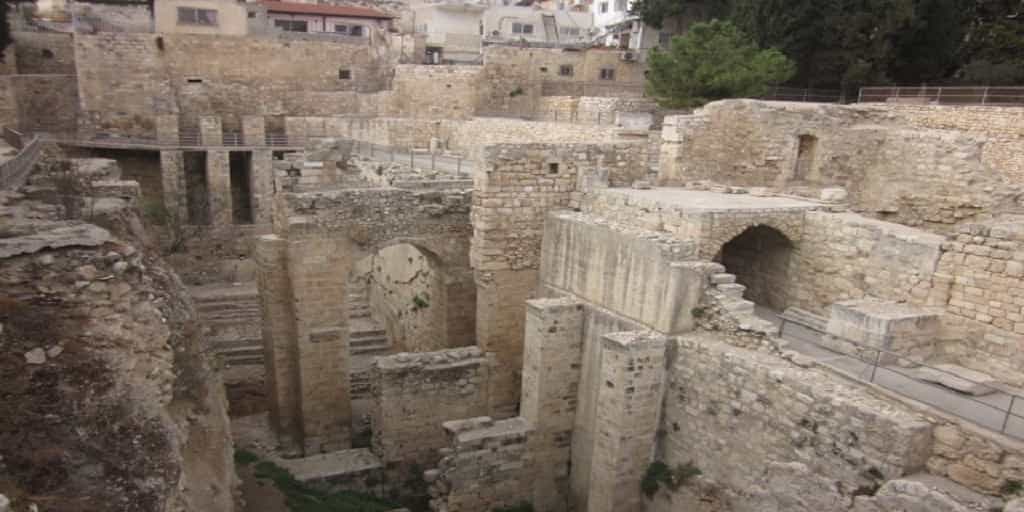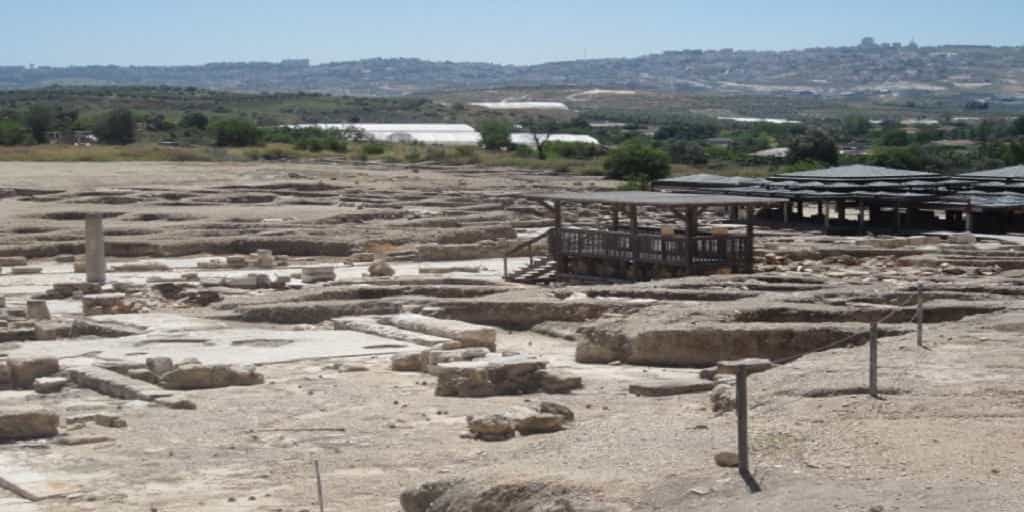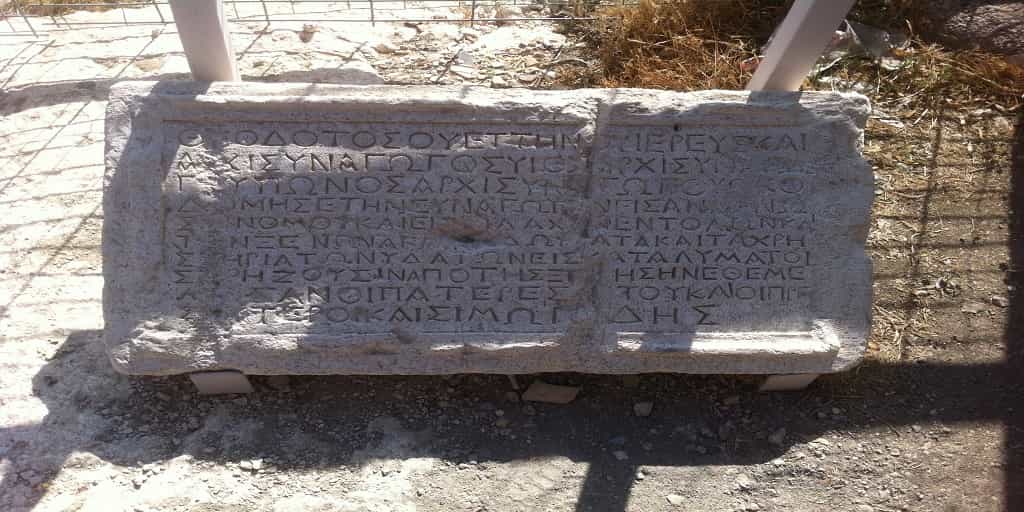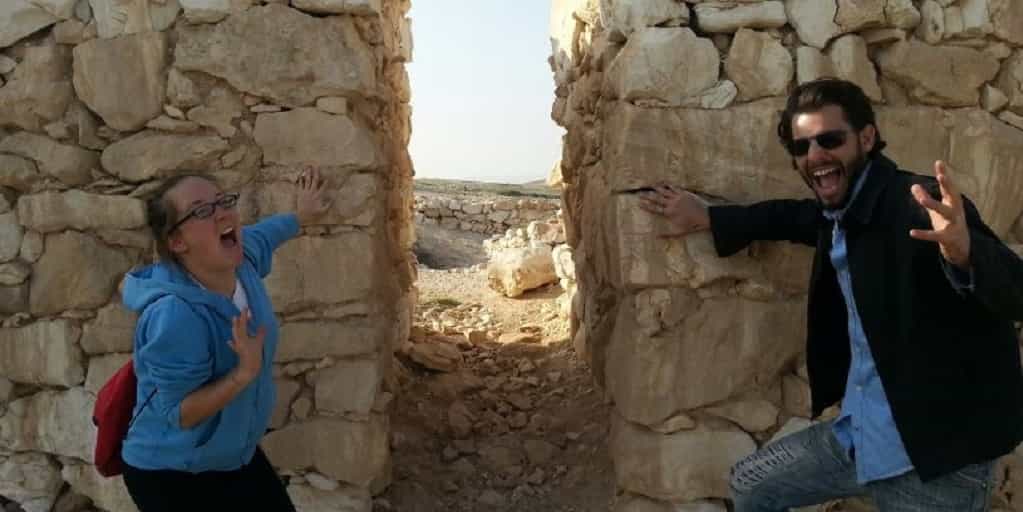Archeology is a thriving industry and part of Israel. That makes sense because it is an ancient area in the world! There are remains from as far back as the beginning of the homo sapiens all the way through the British Mandate and today! The archeological finds bring Israel’s rich history to life. So there are some things we must know in order to fully appreciate archeology in Israel!
#1: Archeologists found remains every period in history.
Because of Israel’s ancient history, it is very common for archeologists to find remains. During excavations, archeologists find remains dating back to when homo sapiens lived with Neanderthals. They found remains from the Bronze and Iron Ages. Remains were found through the times of the First and Second Temple, the Arab Periods, and the British Mandate. Remains don’t just mean building structures, but it also means weapons, plates, clothing, tools, etc.

This is important because it gives solid evidence to what happened thousands of years ago. It breathes truth, or not, to the TaNaKh, the New Testament, and other ancient works by showing what happened during those times.
#2: Many of the National Parks in Israel are archeological remains
Israeli society values its archeological history and evidence. With these archeological chapters showing Israel’s history, Israel has made many of these sites into the National Parks. It has become part of the Israeli understanding. These parks are open during holidays, such as Passover, and Sukkot. Festivals are held again in places that were once held the same places thousands of years ago.
Some examples are Ein Gedi, Masada, Avdat, Tel Dan, and the Tower of David in Jerusalem.
#3: DON’T sit on the remains, especially the walls, of these archeological sites. It ruins the remains.
Again these remains can date back 5,000 years. This attests to their strength to withstand nature and time. However, these remains are also fragile. If you sit on them, or lean on them it could seriously damage the picture we have today for the visitors who are coming tomorrow.
Now that we have found these amazing remains, we all have to work together to safeguard these sites. We have to keep them clean. We have to sit in the right spots. We have to take care of these archeological sites.
#4: In order to build any new public structure, road, etc. without performing an archeological excavation.
When Israel understood the archeological riches we have here, they implemented a law that mandates an archeological excavation before building a public structure, road, residential building, etc. The goal is to check if there are any remains that will open up the mysteries of history. If there are no archeological remains, then building is permitted. If archeological remains are found, archeologists must decide if the remains must be preserved or if the building can go underway.
#5: All antiquities are owned by the Israeli Antiquities Authority.
The Israeli government founded the Israel Department of Antiquities and Museums on July 26, 1948. It took over the functions of the British Mandate’s Department of Antiquities. In 1990, it turned into the Israel Antiquities Authority (IAA). There are plans to build a ‘National Campus for the Archeology of Israel near the Israel Museum (Israel’s national museum) and the Bible Lands Museum in Jerusalem. Its main work is to regulate excavation and conservation, and promote research.
In order to maintain and centralize the antiquities, the Israeli Antiquities Authority owns all of any antiquity and remain found. When archeologists perform an excavation, the remains they discover, clean, and catalog then are stored with and given to the Israeli Antiquities Authority.

#6: Moshe Dayan, a high level general and Chief of Staff, was an avid antiquities collector.
Moshe Dayan was a high level general and the Chief of Staff in the Golda Meir administration. Born in 1915 in Palestine, he began his military career at the age of fourteen. Many know about his military career. But not everyone knows that he was very interested in archeology in Israel, and an avid antiquities collector. He had remains from the Sinai Peninsula, the Negev Desert, and all over Israel. This was, of course, before remains had to be given over to the IAA! His collection ranged from small oil lamps to larger items.
#7: Israel returned antiquities to Egypt as part of the Peace Treaty.
In 1979, Egypt and Israel signed a momentous peace treaty. Sadat came all the way to Israel to begin the peace process! Later, he and Menachem Begin (the Prime Minister of Israel), traveled to Camp David to work out the details of the first peace treaty between Israel and an Arab State. Part of that deal was that Israel give all of the antiquities they found in the Sinai Peninsula to Egypt. Who would have thought that be part a peace treaty?!
#8: You can find ancient remains in the middle of big, modern cities!
Most of the cities in Israel are thousands of years old. Jerusalem is 3,000 years old, Tzfat isn’t much younger (in fact, some believe it’s older!). Haifa, Be’er Sheva, Ashdod, and Ashkelon all have ancient roots. Sometimes you can find these ancient roots in the middle of the city! Walk down almost any street in Jerusalem and you’ll come across ancient remains. There are remains underneath the central bus station in Be’er Sheva. You can go running past remains of the Second Temple and Crusader Periods on the promenade in Ashdod. It certainly means that you can’t take history for granted in Israel.

#9: Always bring a guide book, sources, and/ or a private tour guide!
Some sites about archeology in Israel have signs explaining what the remains were when it was complete and its significance. However, without a private tour guide these remains stay exactly that—remains. But when you bring a private tour guide with you they can make what you’re looking at come alive. They know the right sources and guide books to use to make the site truly alive and meaningful!
#10: When you touch the remains, you are touching walls, homes, etc. that are thousands of years old!
This is the most exciting aspect of archeology in Israel. When you touch these remains you’re touching history! When you place your hand on the Western Wall, you’re touching the retaining wall that held up the large platform floor of the Second Temple! By touching the walls of the houses in Tel Arad, you’re touching homes from thousands of years ago! When you walk up the snake path of Masada, you’re walking in the footsteps of the Jewish Zealots who protested the Romans! So when you go to these spots, if the rocks a touch. Let the history come alive!

Archeology in Israel is incredible and impressive. It provides just as many answers and proofs as questions and mysteries. Exploring the archeology is certainly an adventure. And it is one worth undertaking when you come to Israel!





